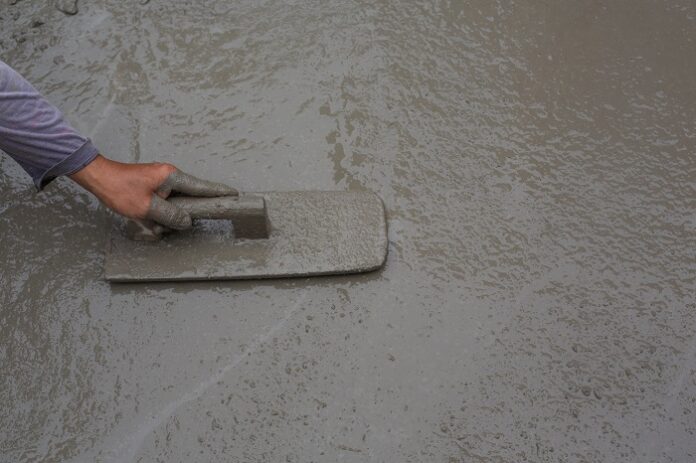When it comes to constructing a solid and reliable foundation for your flooring, the importance of choosing the right screed cannot be overstated. It’s a choice that echoes through the lifetime of your building — impacting everything from underfloor heating efficiency to the longevity of your floors. Today, let’s delve into the pivotal distinctions between liquid screed and traditional screed, highlighting how these differences can redefine your London construction or renovation project.
The Essence of Screed: Understanding the Basics
Before navigating through the nuances of our screed saga, it is crucial to lay down what screed entails. Screed is a thin top layer of material laid over a concrete subfloor designed to provide a smooth, flat surface. The unsung hero will host your chosen flooring, be it tile, wood, or carpet. Whether you opt for liquid or traditional screed, the final goal remains the same – a level and stable floor.
In London’s ever-evolving construction landscape, the demand for efficient and resilient flooring solutions has never been higher. The right screed is the backbone of your flooring, affecting everything from acoustics to insulation.
Traditional Screed: The Time-Honored Approach
Traditional screed, often known as sand and cement screed, is a mixture that has stood the test of time. Composed primarily of sharp sand, cement, and water, this concoction is mixed on-site and laid by hand. It necessitates a skilled tradesperson with a keen eye for levels and an experienced hand to achieve the required smoothness.
The conventional method, while reliable, is labor-intensive and time-consuming. Moreover, it requires a lengthy curing period, where the screed must be left undisturbed to set properly – a process that can take weeks and must be factored into project timelines, especially in bustling areas like London.
A Contemporary Challenger: Liquid Screed Advantages
Enter the modern contender: liquid screed. Also known as a self-leveling screed, this innovative solution is composed of a blend of calcium sulfate, aggregates, and water. It is a pre-mixed solution that is pumped onto the subfloor, spreading naturally due to its fluid consistency.
The benefits of liquid screed are manifold. Its flowing properties not only ensure a quick and efficient application but also encapsulate underfloor heating pipes with minimal air pockets, enhancing heat distribution. Moreover, liquid screed London generally sets faster than its traditional counterpart, allowing for earlier foot traffic and subsequent construction stages. As a result, London Flow Screed services are increasingly sought after in time-sensitive construction projects across the city.
Delving into Depth: Thickness and Application
When comparing liquid screed to traditional screed, their respective depths are critical factors. Traditional screed often requires a depth ranging from 65mm to 75mm for unbonded applications and can go as thin as 40mm when bonded directly to a substrate. In contrast, the liquid option boasts the ability to go as thin as 30mm for bonded applications and 35mm for unbonded or floating finishes, making it an excellent choice for projects where weight and depth are concerns.
The application plays a tremendous role here; the manual spread of traditional screed results in a higher potential for human error, while liquid screed offers a self-compacting, self-leveling application that virtually eliminates these concerns, providing consistency and speed in London construction projects.
Drying and Curing: Waiting Times Reimagined
The curing process serves as a pivotal differentiator between liquid and traditional screeds. Traditional screed’s moisture-rich mix requires a substantial drying time — typically 1mm per day up to 40mm thickness, and then 0.5mm for each additional millimeter. This can translate into lengthy waiting periods before any flooring can be laid, which can be a significant hindrance for fast-paced London projects.
Liquid screed, on the other hand, dramatically alters the timeline. With advanced formulations like London Flow Screed, the drying process can be accelerated, allowing for light foot traffic within 24-48 hours and flooring installations to commence considerably sooner than with traditional alternatives.
Precision and Leveling: Achieving the Ideal Surface
Accuracy and levelness are paramount in screed application. Traditional screed, despite its manual application, can achieve satisfactory flatness when handled by skilled professionals. However, human error and uneven drying can lead to a less-than-ideal finish.
Conversely, the self-leveling properties of liquid screed ensure unmatched precision. This is particularly beneficial when installing sensitive floor finishes that demand flawlessness, a standard often expected in high-end London properties.
Insulation and Acoustics: Evaluating Performance
Both screeds play a role in the insulation and acoustic properties of a floor. Traditional screed’s denser nature typically provides decent insulation and soundproofing. Nevertheless, when it comes to underfloor heating systems, liquid screed is superior. Its capacity to envelop heating pipes and its lower thermal resistance significantly improve heat response times and energy efficiency — a must in the energy-conscious London market.
Acoustically, the rapid-set nature of liquid screed can fill voids and provide a solid, sound-dampening layer underfoot, which is beneficial in multi-story buildings where noise transfer is a concern.
Environmental Considerations: Screed for a Sustainable Future
Sustainability is no longer a buzzword but a necessity in construction practices, especially in a city as forward-thinking as London. Traditional screed components may have a higher carbon footprint due to the production of cement. On the flip side, liquid screed can boast an eco-friendlier profile, with some formulations incorporating recycled materials and requiring less energy to produce.
Furthermore, the efficiency of London Flow Screed in encasing underfloor heating systems translates into long-term energy savings, reducing the carbon footprint of the buildings where it is installed. Adapting such environmentally conscious materials is crucial for the future of urban development.
Longevity and Maintenance: Ensuring Lasting Quality
The durability and maintenance of the screed will affect the lifespan of your floor. Traditional screed is robust and can last for decades if properly mixed and maintained. Although it might be susceptible to cracking if laid incorrectly, this issue can be mitigated through proper control joint placements.
Liquid screed also offers excellent longevity, adhering well to various substrates, resulting in reduced shrinkage and an even distribution of stress across the floor — a significant consideration for high-traffic areas in London’s commercial and residential buildings.
Conclusion:
Liquid screed and traditional screed present unique advantages tailored to different project requirements. As we have uncovered the fundamental distinctions between the two, it becomes clear that the shift towards liquid screed emphasizes ease of application, efficiency, and optimal performance for underfloor heating. Yet, the traditional screed holds strong where manual expertise is available and time constraints are less stringent.
For contractors and homeowners in London seeking to streamline their construction process while not compromising on quality, Liquid Screed London emerges as a forward-thinking choice that aligns with the fast-paced, eco-conscious ethos of the city’s building landscape.
As each project presents its own set of challenges and priorities, the decision hinges on a thorough consideration of the factors we’ve outlined. By delving into the depth of these differences, your choice will be as solid as the floor you intend to create.
Image by jcomp on Freepik





